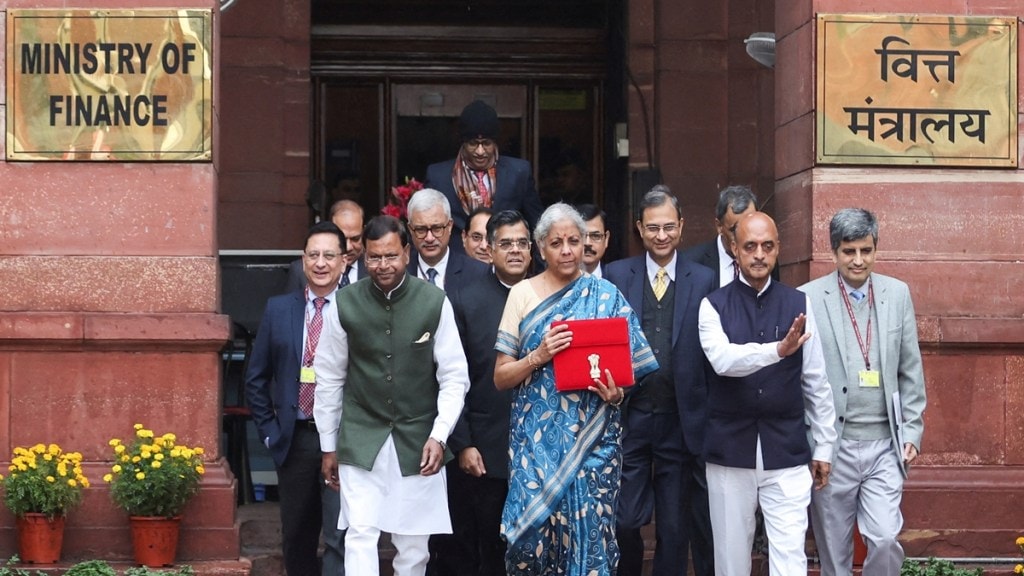Budget 2024: Union Finance Minister Nirmala Sitharaman on Tuesday, July 24, will present the Union Budget 2024-24 in the Lok Sabha of the third Narendra Modi-led government. In this highly-anticipated Budget, Sitharaman is widely expected to give some income tax relief to salaried and middle-class taxpayers, who are reeling under high inflation. Small taxpayers have not seen any major tax reliefs since Budget 2020, when the government introduced the Standard Deduction of Rs 50,000 and exempted individuals earning up to Rs 7.5 lakh per annum from tax liability under the new tax regime. As there have been no major changes in the old tax regime for past many years, tax experts are of the view that there would be some major changes in the tax slabs and rates under the old regime as well.
Major anticipated reforms in the upcoming budget encompass streamlining income tax slab rates, augmenting the Section 80C deduction ceiling, elevating the standard deduction threshold, offering enhanced tax incentives for homebuyers and investors, and refining the New Tax Regime to boost its attractiveness. Read more on top 10 expectations of individual taxpayers which Budget 2024 needs to fulfill.
-Extension of sunset date for qualifying for concessional tax rate on income of new manufacturing domestic companies
-The Taxation Laws (Amendment) Act, 2019, inter-alia, inserted section 115BAB in the Act to provide that new manufacturing domestic companies set up on or after 1 October 2019 commence manufacturing or production by 31 March 2023. These companies do not avail of any specified incentive or deductions; they may opt to pay tax at a concessional rate of 15 per cent.
-The time for commencing manufacturing or production was extended to 31 March 2024 by the Finance Act, 2022. • Considering that the government promotes companies to “Make in India”, we request that the time limit for commencing manufacturing or production be further extended to 31 March 2026.
Addressing media after the Finance Minister tabled the Economic Survey, the Chief Economic Advisor said that " we need all hands on table."
Global economic growth has been 3.2 per cent in 2023 as per the World Economic Outlook published this year in April by the International Monetary Fund (IMF). Diverging growth patterns have emerged among countries. (PTI)
Different industry experts and observers are pushing out their outlook and expectations on the Budget. According to Asit C Mehta Investment, higher outlay for capex and maintaining the growth momentum remain top focus areas.
The government, according to them, may bump up the capex outlay from what was decided in the interim budget. The Capex in the interim budget was at Rs 11,11,111 crore for FY25. The PLI schemes are also expected to continue with focus on Green Energy.
Housing cost has been on the rise and HRA exemption is also another aspect that's being looked into. According to E&Y, one of the key elements on the wishlist include Tier-2 cities like Hyderabad, Pune, Bengaluru, Ahmedabad and Gurgaon in the list of cities where employees are entitled to 50% HRA exemption instead of flat 40% for all Tier 2 cities.
The income tax slabs is the most talked about aspect ahead of the Budget. Most industry observers are expecting significant measures for the middle class, especially in terms of tax relief.
According to E&Y, basic exemption limit is expected to increase from Rs 3-5 lakh in the new tax regime and reduction. There are also expectations that standard deduction threshold may be raised to Rs 1 lakh from Rs 50,000.
Sanjaya Mariwala, President of IMC Chamber of Commerce and Industry and Executive Chairman & Managing Director of OmniActive Health Technologies, says, "India has registered impressive GDP growth of more than 7%, but employment generation still needs a boost. We urge the government to introduce job-creation incentives, strategically aligned with the Production Linked Incentive (PLI) scheme. Additionally, crop diversification and improved irrigation are essential for enhancing rural incomes.
A robust economic ecosystem also requires streamlined regulations. Despite recent improvements, the current compliance system remains an obstacle to the ease of doing business. Simplifying regulations with measures like single-window clearances will aid businesses and allow India to fully leverage its industrial potential.
High-tech manufacturing should be a priority. The PLI scheme's momentum must continue, especially in semiconductor and chip manufacturing, to safeguard against geopolitical disruptions.
Lastly, a comprehensive approach necessitates rationalizing GST, implementing labour law reforms, and addressing climate change. These steps will bolster India's resilience, ensuring economic robustness in a world fraught with uncertainties. What we need on priority is - 'One Nation, One Policy'."
Tarun Chugh, MD & CEO, Bajaj Allianz Life Insurance, says, "We call on the ministry to introduce Long Term Capital Gain taxability for all high-value traditional life insurance plans (with an aggregate annual premium exceeding Rs. 5 lakhs), in line with high-value ULIPs. This move will enhance uniformity and tax efficiency for insurance customers, bringing them in line with other similar financial products available in the market."
The Economic Survey was tabled in the Lok Sabha by Finance Minister Nirmala Sitharaman. The Survey, drafted by the Economic Division of the Ministry of Finance under the guidance of the chief economic adviser, provides insights into India's economic state and key indicators for the fiscal year 2023-24, along with a preview of the current year.
BJP leader Nirmala Sitharaman, who holds the finance portfolio, will present the Union Budget 2024-25 tomorrow. A day ahead of the Budget, the Economic Survey is tabled in the Parliament. Ahead of the Budget Session, Prime Minister Narendra Modi said that the Union Budget will be a Budget that will lay the roadmap for 'Viksit Bharat', a developed India.

